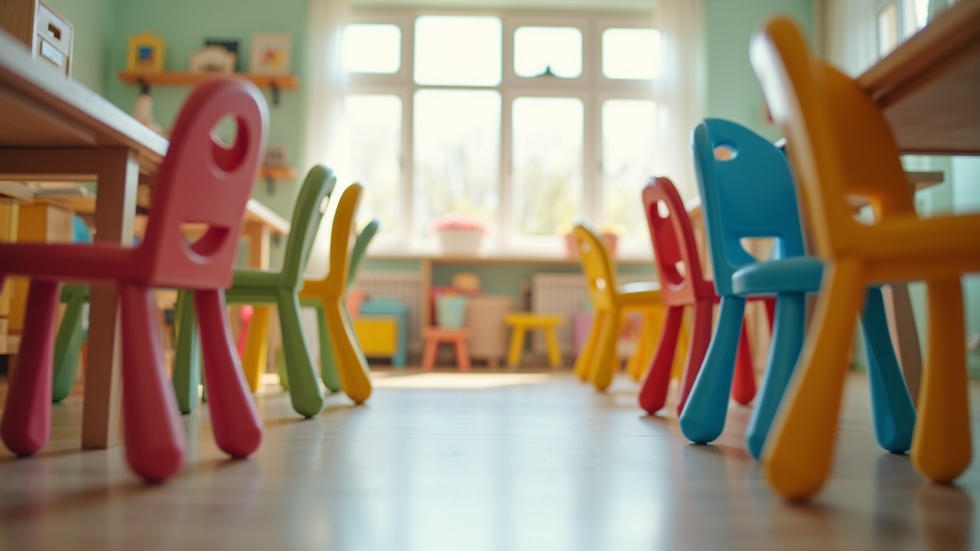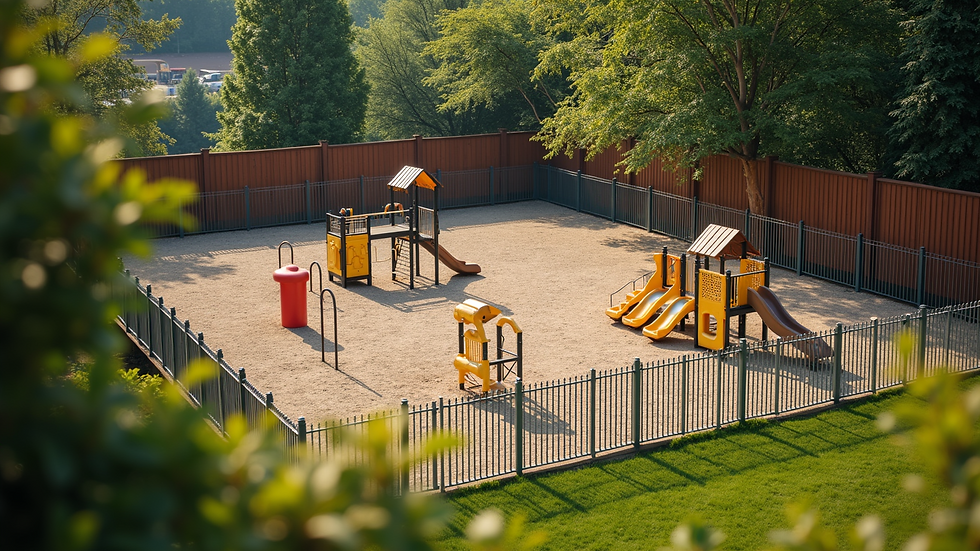Creating a Safe Learning Environment for Young Minds
- admin
- Jul 28
- 4 min read
Creating an environment where young children feel safe, supported, and encouraged to explore is essential for their growth and development. Early learning spaces play a crucial role in shaping children's experiences and attitudes toward education. When these spaces are secure and nurturing, children can thrive emotionally, socially, and academically. This article explores practical ways to design and maintain secure early learning spaces that foster positive development in young minds.
Designing Secure Early Learning Spaces: Key Considerations
When planning early learning spaces, safety and security must be top priorities. A secure environment helps children feel protected and confident, which is vital for effective learning. Here are some essential factors to consider:
Physical Safety: Ensure that the classroom or play area is free from hazards. This includes covering electrical outlets, securing furniture to walls, and using non-toxic materials. Floors should be slip-resistant, and sharp edges should be cushioned.
Accessibility: Spaces should be designed to accommodate children of all abilities. This means having ramps, wide doorways, and accessible restrooms.
Supervision: Arrange furniture and play areas to allow clear sightlines for caregivers and teachers. This helps in monitoring children easily and responding quickly if needed.
Emergency Preparedness: Establish clear evacuation routes and conduct regular drills. Keep first aid kits accessible and ensure staff are trained in basic first aid and CPR.
By addressing these elements, early learning spaces become physically secure, allowing children to explore and learn without unnecessary risks.

What is a safe and positive learning environment?
A safe and positive learning environment goes beyond physical safety. It includes emotional and psychological security, where children feel valued, respected, and motivated to learn. This type of environment encourages curiosity and creativity while promoting social skills and self-confidence.
Key characteristics include:
Respectful Interactions: Teachers and caregivers model kindness and patience, encouraging children to express themselves without fear of judgment.
Consistent Routines: Predictable schedules help children feel secure and understand what to expect throughout the day.
Encouragement and Praise: Positive reinforcement motivates children to try new things and persist through challenges.
Conflict Resolution: Teaching children how to resolve disagreements peacefully fosters empathy and cooperation.
Creating such an environment requires intentional effort from educators and caregivers to nurture trust and emotional well-being.

Practical Strategies to Foster Secure Early Learning Spaces
Implementing secure early learning spaces involves practical steps that educators and caregivers can take daily. Here are some actionable recommendations:
Childproof the Environment
Regularly inspect the learning area for potential hazards. Use safety gates, secure cabinets, and keep small objects out of reach to prevent choking.
Promote Open Communication
Encourage children to share their feelings and concerns. Use age-appropriate language and active listening to validate their emotions.
Create Zones for Different Activities
Designate areas for quiet reading, active play, and creative arts. This organization helps children transition smoothly between activities and reduces overstimulation.
Incorporate Nature and Outdoor Play
Outdoor spaces provide fresh air and opportunities for physical activity. Ensure these areas are fenced and free from dangerous plants or objects.
Engage Families
Involve parents and guardians in the learning process. Share updates and invite them to participate in activities, strengthening the support network around the child.
Use Visual Aids and Labels
Visual cues help children understand rules and routines. Label shelves and bins with pictures and words to promote independence.
By applying these strategies, early learning spaces become more secure and supportive, enhancing children's overall experience.

The Role of Educators in Maintaining Secure Early Learning Spaces
Educators are the backbone of secure early learning environments. Their attitudes, skills, and actions directly influence how children perceive safety and support. Here are ways educators can contribute:
Ongoing Training: Stay updated on best practices in child safety, behavior management, and inclusive education.
Building Relationships: Develop strong, trusting bonds with each child to understand their unique needs and challenges.
Observing and Responding: Monitor children's behavior and intervene early if signs of distress or conflict arise.
Modeling Behavior: Demonstrate respect, empathy, and patience in all interactions.
Encouraging Independence: Support children in making choices and solving problems, boosting their confidence.
Educators who are proactive and compassionate create a foundation where children feel secure and ready to learn.
Supporting Emotional and Social Development in Secure Early Learning Spaces
Emotional and social skills are as important as academic knowledge in early childhood. Secure early learning spaces nurture these skills by:
Teaching Emotional Literacy: Help children identify and name their feelings through stories, games, and discussions.
Encouraging Cooperative Play: Group activities teach sharing, turn-taking, and teamwork.
Providing Calm-Down Areas: Designate quiet spaces where children can retreat to manage overwhelming emotions.
Celebrating Diversity: Include materials and activities that reflect different cultures and backgrounds, promoting inclusivity and respect.
These practices build resilience and positive relationships, essential for lifelong success.
Creating a safe learning environment is a continuous process that requires dedication and thoughtful planning. By focusing on physical safety, emotional well-being, and supportive interactions, early learning spaces can become places where young minds flourish. Implementing these strategies ensures that children not only learn but also feel secure and valued every day.



Comments